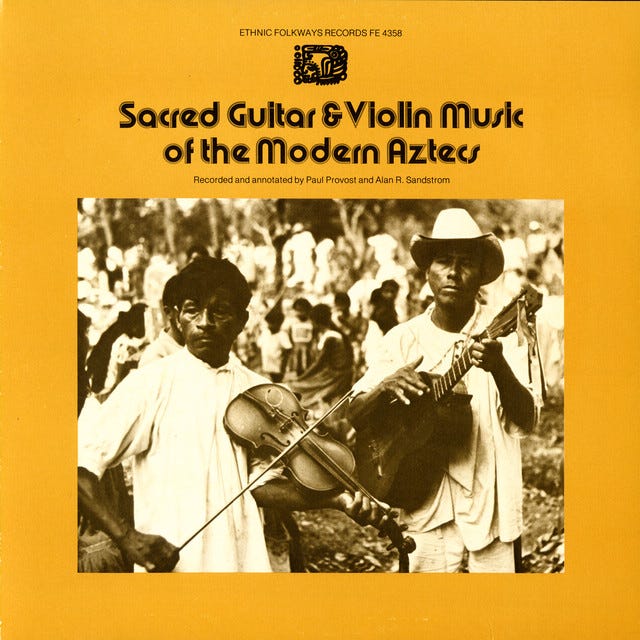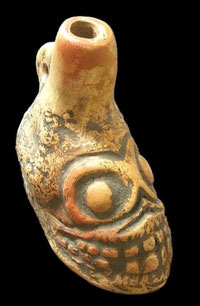Genre of the Day - Nahua Music
Album of the Day - Sacred Guitar & Violin Music of the Modern Aztecs by Various Artists (1977)
Throughout the entire week, each random genre has been remarkably thematically consistent, grappling with how people imagine and interpolate musical whispers of the past and carry them into the musical present, even extending into visionary conceptualizations of music that can redefine historically significant sounds. We began the week traversing the tombs of ancient Egypt before fancying ourselves psychedelic knights in the modern chapters of the Canterbury Tales, and excavated the Celtic churches of antiquity. It’s a big week for any archaeologist readers I might have, and hopefully anyone else interested in using Spotify as their shovel to dig up treasures of untold value.
Nahua music serves as the torch-bearer for pre-colonial Aztec traditions, a civilization that absolutely dominates the popular archaeological conversation within the Americas (though the Inca Empire gets its fair share of press, of course). Upon visiting the excellent curation of Aztec artifacts and even sections from grand temples at Mexico City’s National Anthropology museum earlier this year, it’s even more awe-striking to behold the legacies up close. Though precise Aztec musical compositions have been lost to time, just as with most ancient Egyptian music, Nahua music serves as our chance to listen in to a living legacy.
The same Nahuatl language spoken throughout the Aztec empire lives on in active use among 2 million speakers, just as Aztec rhythmic syntaxes remain core in Nahua music. This site has compiled rhythms recorded by Spanish colonial observers that employ teponaztli log drums, the huehuetl two-sided and dual tone drum, and rattles. Given music’s preeminent place in Aztec ritual, it’s easy to understand why the culture would acclimate to the musical components of colonial religion more quickly than the actual beliefs, penning hymns in Nahuatl and incorporating Spanish instruments in the guitar and violin to the repertoire of traditional accompaniment. Some instruments only exist as reconstructions based on archaeological conclusions, such as the death whistle, a skull-shaped resonator that may be considered the hardest instrument humankind has crafted, capable of producing complex infrasonic vibrations.
The death whistle may not get a spot in its chorus, but a vibrant life breathes through the intimacy of today’s album, an ethnomusicological documentation of the sacred violin and guitar music of contemporary Nahua communities. Similar manners of playing apply to disparate situations, speaking to an enduring ritualistic place for music; one song follows an altar ceremony inside an older women’s house, violin pirouettes and rapid double-time strumming soundtrack the exchanges and laughter in the background, whereas others are lively dances rendered dynamism as a result of the use of traditional drumming with centuries of precedent as in the suite of rattle dances. To become an archaeologist is extremely competitive; music offers fewer barriers to entry, and albums like today’s help draw a line from what it was like the grandiose vestiges of the past in their moment to living customs better than any other art form.








Just wanted to mention how much I love this series. To have something insightful to add to the roll of the dice of music genres is pretty incredible.